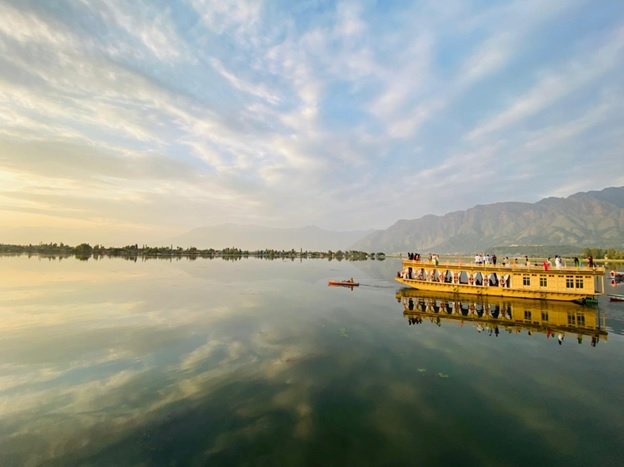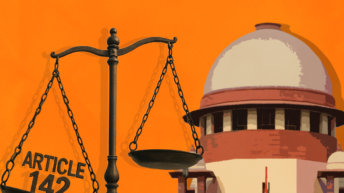
India Foundation hosted the tenth edition of the Young Thinkers Meet at Pahalgam and Srinagar in the Kashmir valley. The forum intended to enable interaction with various stakeholders from the region and enhance the understanding of the region’s social and political realities. We interacted with people at different levels, representing different viewpoints, some of whom told us exactly what we wanted to hear, while some others told us just the opposite. Still, others quietly pushed what we did not want to hear, carefully couched in terms that we like to hear. These interactions shattered many of our preconceived notions about Kashmir. However, every new perspective, instead of progressively adding a new shade to our understanding, made the complete picture increasingly elusive. It is evident that the region’s political and social realities cannot be defined in a homogenous or straightforward manner. The following article is an attempt to highlight the many perspectives that we were exposed to in the valley, to gain a semblance of clarity about the multilayered complexities that were laid out to us.
Historically, the political class of Kashmir was dominated by two family-run parties. These parties were largely dependent on votes from the valley, and therefore, had allowed for the continuation of the disproportionate electoral influence of the region. These parties had split personalities; back in Delhi while they swore allegiance to India, on the ground though, they encouraged anti-India sentiment. Their primary election plank had been that New Delhi was seeking to abrogate Article 370 which supposedly provided benefits to the people of the state. They claimed to be the only bulwark against such a move, promising the people that Article 370 would never be abrogated as long as their reign continued.
The commitment to Article 370 however, seems to have stemmed not from an ideological or a fundamentalist standpoint, but from a transactional one. Large sums of money that New Delhi had poured into the state, flowed into an elaborate patronage network fostered by both parties. Lakhs of people and their entire families have been dependent on the government and the security forces for employment. Similarly, many youths have been on the payroll of entities attempting to destabilise the valley. Essentially, it was important for the conflict to continue, since many livelihoods depended on it. Having Article 370 as the central political plank was necessary at multiple levels to uphold the status quo. Its presence in the political discourse encouraged an anti-India undercurrent. It never allowed the Indian state to have as strong a footing as in other parts of India, forcing it to compensate with a bloated state apparatus. And in turn, these factors allowed anti-India forces to operate, neatly balancing a fragile ecosystem. The political class was happy to allow separatist and fundamentalist forces to operate as long as things did not get too out of hand, and it was happy to allow New Delhi to carry out its agenda as long as their powers remained unaffected. The media’s role here must be noted as well since it played an important part in perpetuating the conflict, many a time making mountains out of molehills. Militancy in the state affected a handful of districts, and the number of militants was in the hundreds. It was never a Taliban or an ISIS-like situation involving hordes of people. The media, however, gave the world a different picture. As someone in the security establishment pointed out to us, Srinagar’s Lal Chowk was never the most volatile point in the conflict yet most attacks were perpetrated here simply because the media outlets were stationed nearby to dutifully provide the desired coverage. Even the occasional stone-pelting and raising of ISIS flags here were orchestrated for optimal coverage.
However, large parts of the population remained outside this ecosystem or the patronage networks. Politically, several options other than the dominant parties existed as well, with strong constituencies. The Congress Party too had always maintained a foothold in the region, including when it was considered as the Indian nationalist representative on the valley’s political spectrum. Of late, the BJP has made steady inroads in Jammu and Ladakh and has become less untouchable amongst the valley’s political class. The biggest testament to this was the 2015 post-poll BJP-PDP alliance government. As a senior politician brought to our notice, he had sought votes in the name of PM Narendra Modi and managed to win the second-highest vote share in the valley. Trends indicate that in the years leading to the abrogation of Article 370, the electoral fortunes of both the family-run parties were already on the decline.
Another interesting point that a politician from the valley made was that the death of Burhan Wani saw higher levels of mobilisation and violence than the abrogation of Article 370. When it was finally abrogated, nothing really happened. The conflict and the article supporting it had benefited only a handful of people, and the majority of the population was barely impacted. Perhaps that is why the common man had lost interest in demanding it. Today, despite heavy militarisation and the security apparatus enjoying a freer hand, the administration is leaving no stone unturned in taking development to the last man in the queue. Elected representatives in local bodies tell us that due to the generous financial packages from New Delhi, they have more money than they can spend. Notwithstanding the pandemic, tourism is flourishing like never before. The scope for investment and growth is at an all-time high. New Delhi seems to have empowered a new political class at the grassroots and is making attempts to uplift the common man. Linking the assembly elections to the delimitation exercise is also a clever card that New Delhi has played.
Yet, several questions remain unanswered. The first and foremost question is the extent to which deradicalisation can occur under the present circumstances. A Kashmiri we met while trekking in Pahalgam told us, “we are experts in telling you what you want to hear”. Will this transactional mindset benefit New Delhi’s development-oriented approach? What is it really that the common Kashmiri seeks? Fundamentalist elements exist in the valley, and across the border, ready to exploit every faultline. New Delhi will have to tread carefully. Dismantling the double-faced political class was only a first step. Another interesting insight that we came across was that even lower-middle-class families in the valley are more landed and inherently better off than their counterparts across the country. A steady income has enabled many youngsters to remain idle. How would you convince such people to take part in the valley’s growth story? This too shall be a challenge, since young idle minds in the valley are not in anyone’s best interest.
Some pertinent questions about the new political class in the valley remain unanswered. New political parties have formed and are gaining traction in the valley, replacing the old guard. These news parties, led by the likes of Sajjad Lone (Jammu and Kashmir People’s Conference) and Altaf Bukhari (Jammu and Kashmir Apni Party), have an integrated Jammu and Kashmir as their starting point. Article 370 is not an issue for them, a state fully integrated with India without any special status or autonomy is their reality. Even the erstwhile parties who initially formed the Gupkar Alliance have been forced to accept this new reality. At the local level, newly elected representatives seem full of hope for the future, and full of praise for New Delhi and its proactive approach. At the leadership level, however, questions persist. These leaders have been part of the erstwhile political class of the valley, the patronage networks and even the separatist circles. More than whether the new setup can take them along, will they be able to function within it and guide it in the state? The clamour for the restoration of statehood has already begun. New Delhi will have to be mindful of pitfalls while dealing with the issue of statehood, and in its interactions with the new political class.
The key takeaway is that there is a lot more than what meets the eye. Political or media narratives can mislead the beholder. Various stakeholders must be continuously engaged to get a better perspective of the ground realities. Although it might be too soon to say, I am hoping what we witnessed were glimmers of a bold new beginning.





Beautifully articulated article. Enjoyed it. Thank you.